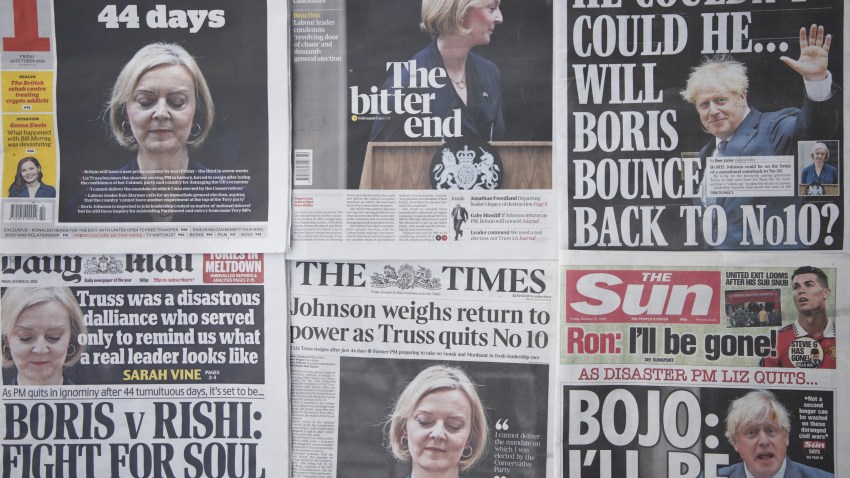Liz Truss resigned as British prime minister on Thursday just 44 days after assuming office, making her by most measures the shortest-ruling prime minister in British history. It’s safe to say that had the first two weeks of her tenure not been preoccupied with the death and funeral of Queen Elizabeth II as well as her trip to the United Nations General Assembly in New York, her self-inflicted political demise might have arrived sooner.
The catalyst for her resignation came four weeks ago, when the announcement of her government’s fiscal plans set off such turmoil in financial markets that the Bank of England was forced to intervene to stabilize trading in British sovereign bonds as well as the pound. Truss responded by dropping out of sight for several days, followed by a brief period of obstinate insistence that whatever was happening in the markets was unrelated to her plan to cut taxes while implementing a massive energy bailout for household consumers, at a time of generational highs in the rate of inflation. She then backtracked, sacking her top ally as chancellor of the exchequer and disavowing almost all of the announced tax cuts.
Nevertheless, the consensus of everyone except Truss herself had already taken hold that the only step she could take to staunch the bleeding was to step down as prime minister. At one point, a column in The Economist suggested that a head of lettuce likely had a longer shelf-life than Truss’ hold on 10 Downing Street, prompting one British daily to launch a “livecam” of a head of lettuce to see if it would outlast her.

